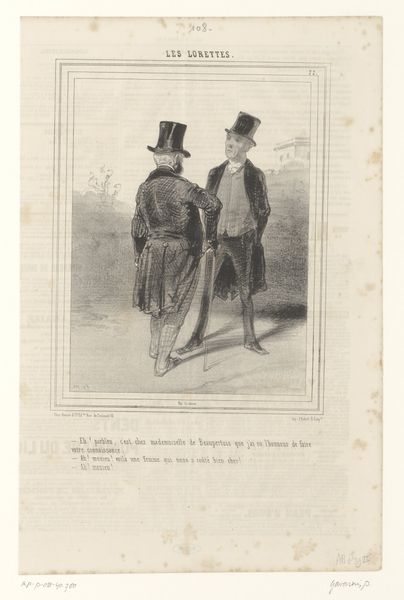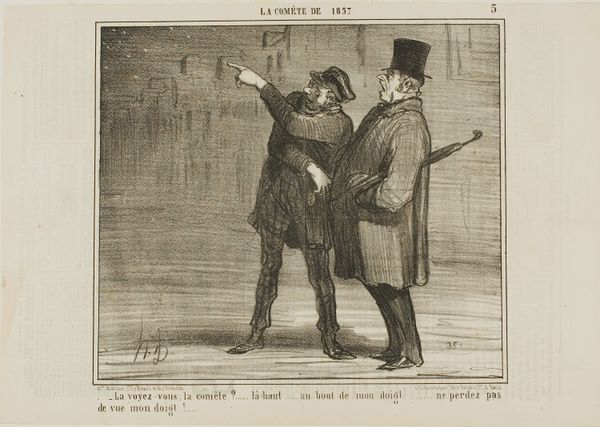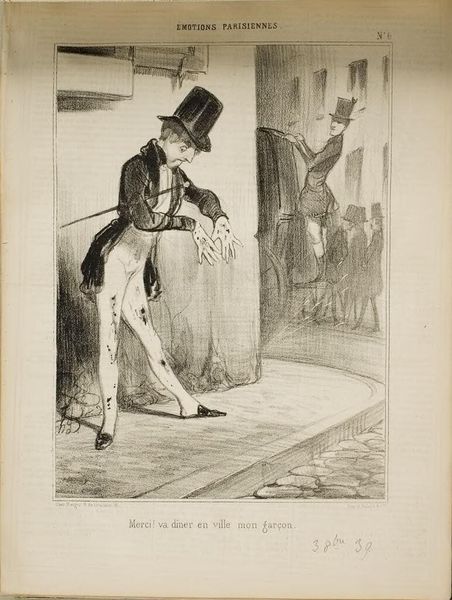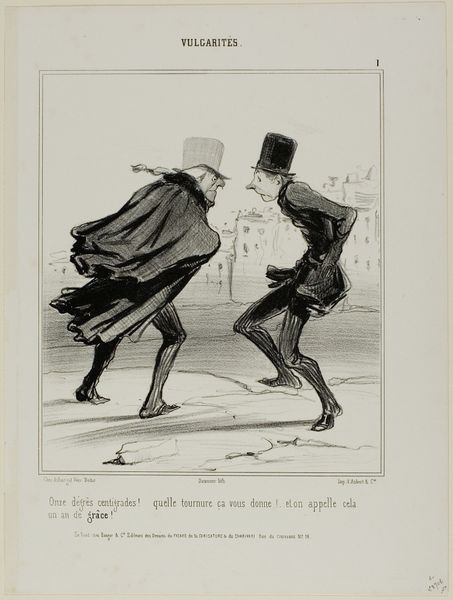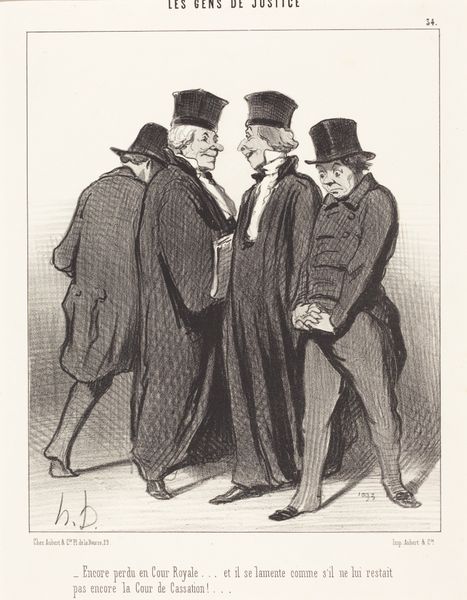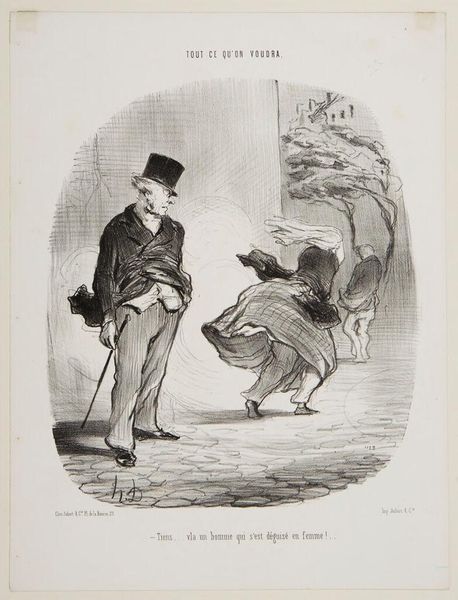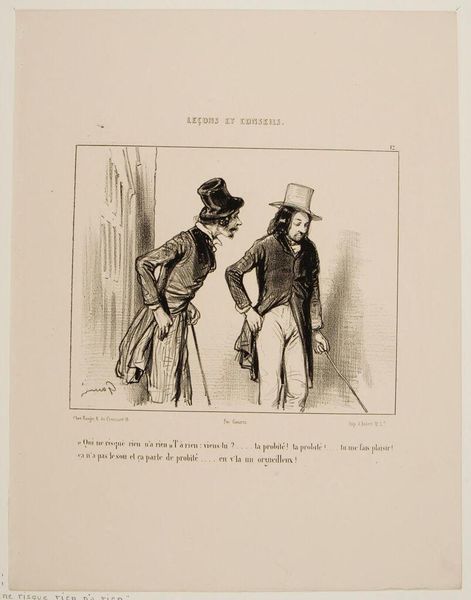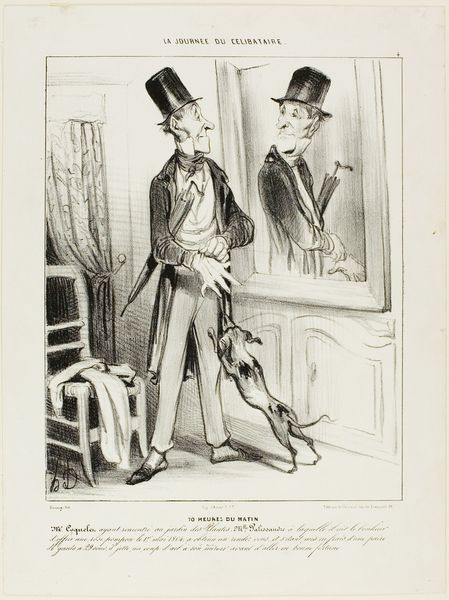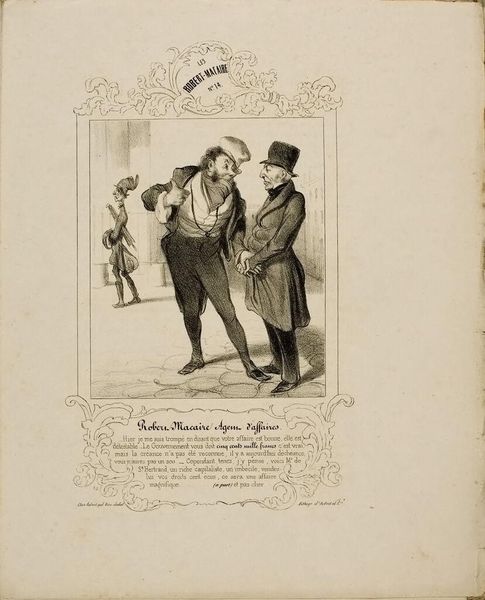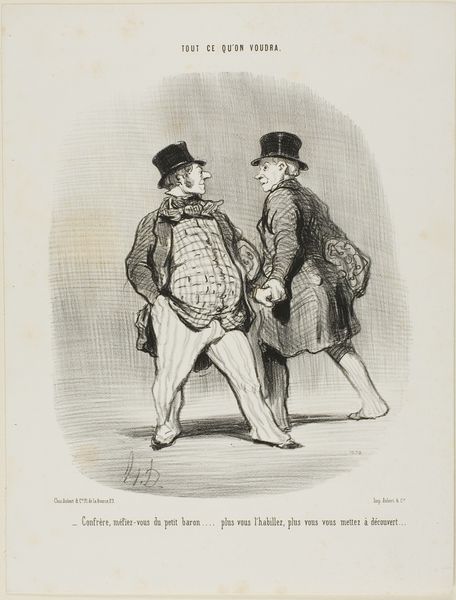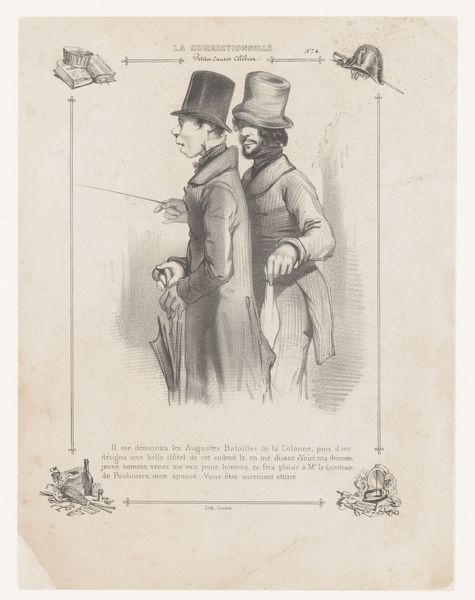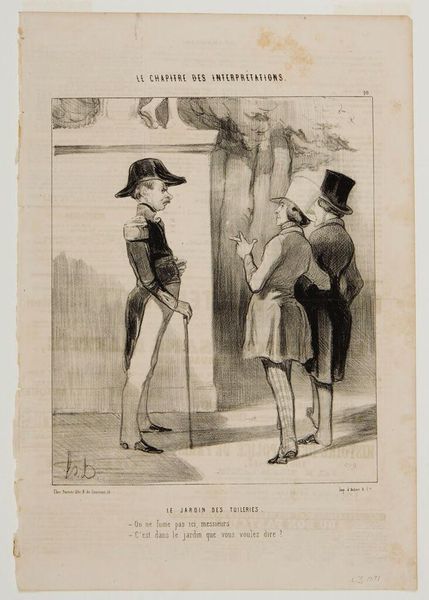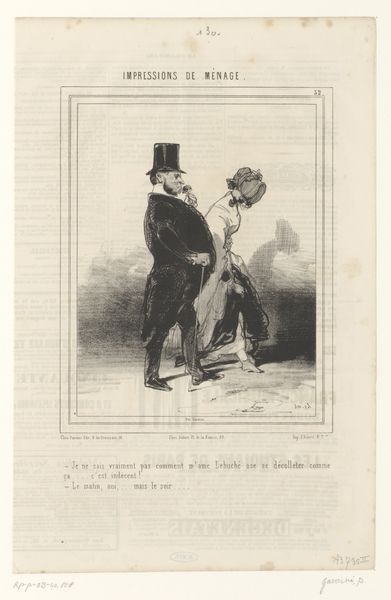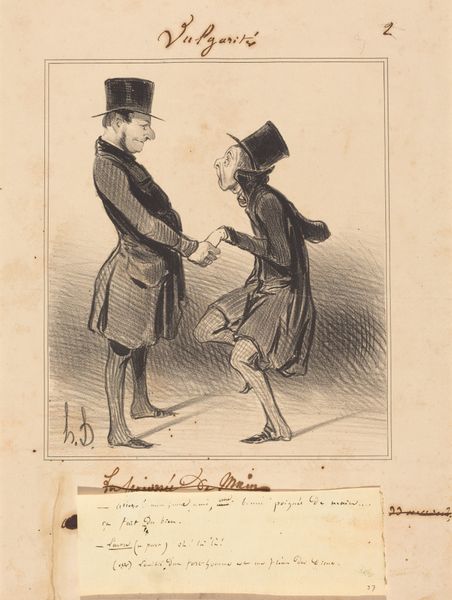
“- How do you know that I am a widower? After twenty years of forced labour, not marriage, I am slowly starting to pull myself together again, and there you are, proposing me a second marriage! Ragoulet, would you please stop holding my hand!,” plate 10 from Vulgarités 1841
0:00
0:00
drawing, lithograph, print, paper
#
drawing
#
lithograph
# print
#
modern-moral-subject
#
caricature
#
paper
#
old-timey
#
france
#
19th century
#
genre-painting
Dimensions: 239 × 197 mm (image); 331 × 253 mm (sheet)
Copyright: Public Domain
Curator: We’re looking at a lithograph by Honoré Daumier from 1841, titled “- How do you know that I am a widower? After twenty years of forced labour, not marriage, I am slowly starting to pull myself together again, and there you are, proposing me a second marriage! Ragoulet, would you please stop holding my hand!,” plate 10 from Vulgarités. Editor: What strikes me is the awkward tension captured in these hatched lines, that stiff body language! You can almost feel the discomfort radiating from the recoiling figure. The stark contrast in shading really emphasizes the depth. Curator: Indeed. Daumier uses the lithographic process to create dynamic contrasts, accentuating the social commentary at play. Observe the strategic use of light and shadow to amplify the grotesque features, characteristic of caricature. Editor: And notice how the clothing of the suitor, on the left, appears almost impeccably rendered with finer detail. While the rejected man is more gestural and undone. It certainly reflects societal stratification. Curator: Precisely. The artist deliberately employs his medium to convey class distinctions and the absurdities of bourgeois society in 19th-century France. The coarse hatching mimics the harsh realities of the era, highlighting its vulgarities, as the series name suggests. Editor: What's interesting is the printmaking process; the act of reproduction here amplifies the message across social boundaries, making it more democratic by its accessibility. A critique, made available, ironically, for consumption. Curator: An incisive point. The medium serves as a potent tool to disseminate socio-political critique. Its reproduction facilitates wider engagement. Editor: Studying how Daumier treats form to convey class struggle shows the medium isn't neutral; its use here is integral to the critique. Curator: Reflecting on Daumier’s choices invites us to look critically at how materials and production shape meaning and social dialogues. Editor: Right, it brings us closer to questioning systems, hierarchies, and consumption inherent in the creation, and interpretation, of art.
Comments
No comments
Be the first to comment and join the conversation on the ultimate creative platform.
